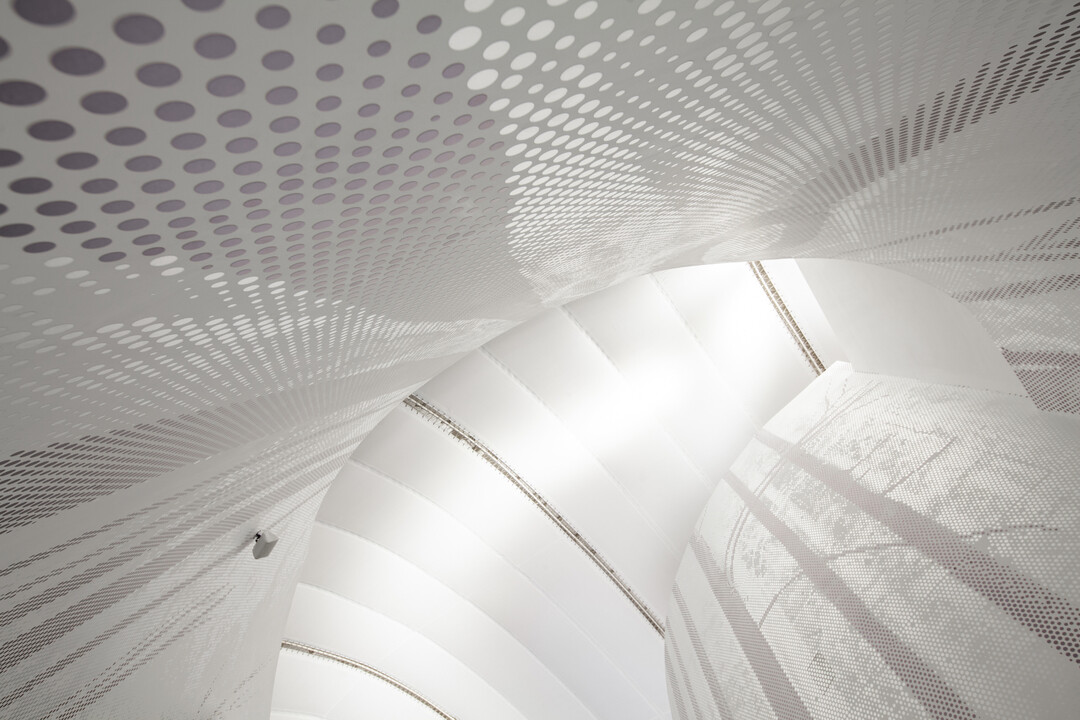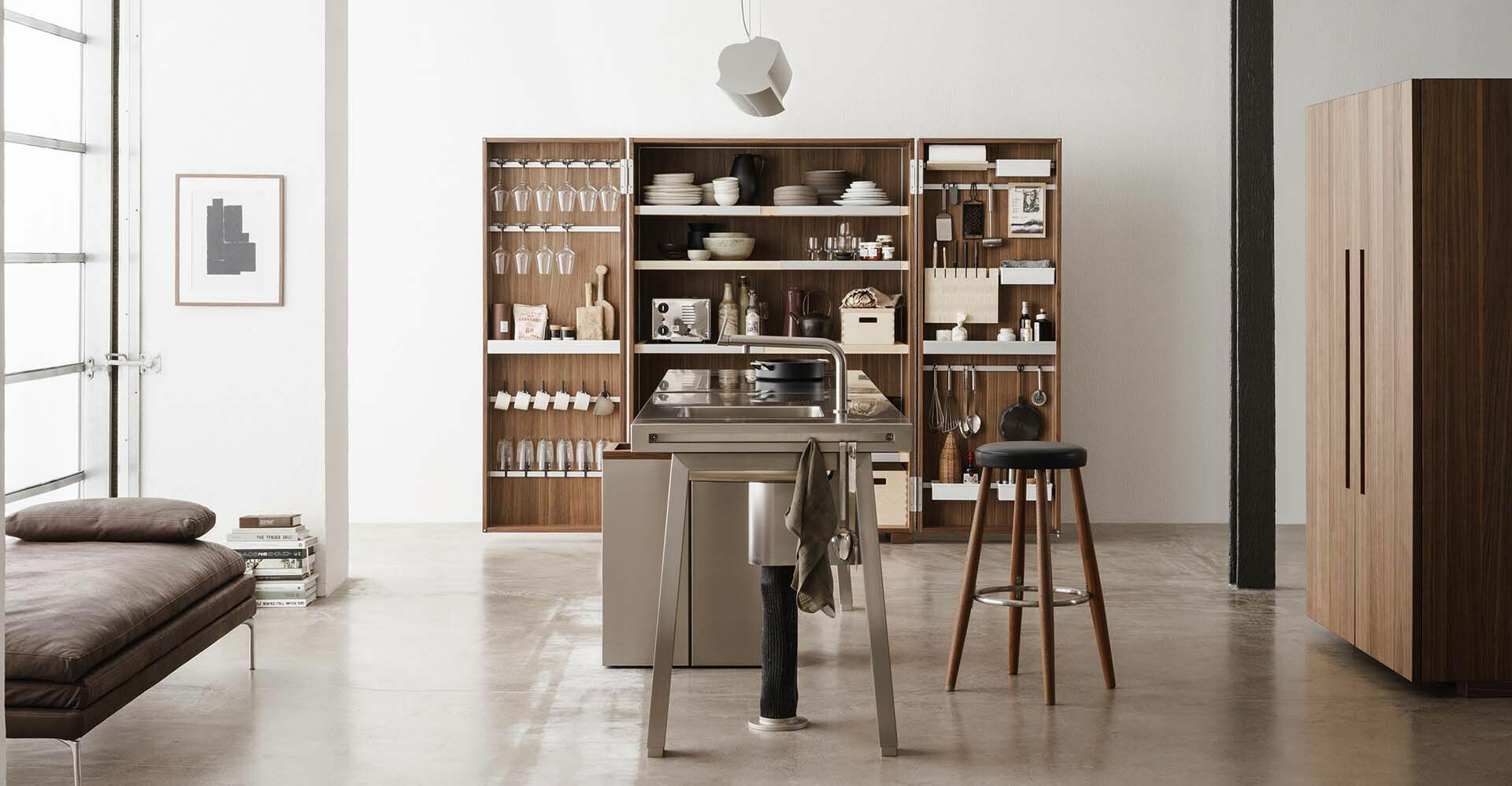
Members Only
加入會員後,點選Members Only即能閱讀更多完整文章及獨家內容。

滋養情感,生活交流的幸福拼圖
你知道在廚房「料理」有益身心健康嗎?忙碌工作的日常中,料理成為一天裡最期待的時刻,哼著歌輕鬆愉快地走進廚房與家人一起備料、烹煮,在觸摸洗滌食材與烹調香氣四溢之餘,人們的感官能從中被逐一解鎖,在和家人一起品嚐彼此共同成果的同時,便能感到無比幸褔!如同進行一場心靈的自癒儀式,如此有滋有味的料理食事,還延伸出更多助益,美國烹飪治療師 Julie Ohana 提出,料理不僅能使家庭氣氛和諧、還能從中激發創意和抒解壓力 ; 而新包浩斯烏爾姆(Ulm School)學院創辦人同時也是20世紀最具影響力的設計師之一 Otl Aicher 著作《 The Kitchen is for cooking 》一書中更具象描述了這個概念。
承載75年歲月德國頂級廚具—bulthaup 早在1980年,便已將廚房視為日常中居家空間裡情感交流的核心場域。而廚房之於當代環境的條件下,已然跳脫機能層面,與人們的精神感知及生活緊密串聯在一起,除了實質的料理以外,更具有人文情感的意義。談起當年 bulthaup 與設計師 Otl Aicher 的合作,可說是將品牌創始人 Mr. Martin Bulthaup 深厚而扎實的工藝基礎,推升至更高層次即「生活廚房哲學」的重要里程碑,如全球第一座廚房中島「System b」原型,便是破除當年眾人對封閉廚房、面壁料理的刻板印象,成為串接生活媒介的最佳實例。牽起這個合作機緣的關鍵人物,即品牌第二代負責人、亦創始人兒子 Mr. Gerd Bulthaup,他同時是為品牌注入更多建築結構概念的重要推手。
紅色 Alfa Romeo 的契機
擁有建築師背景的 Gerd Bulthaup 於1976年接手後,認為廚房不應只是家具,它應是建築藝術空間的一部分,期待品牌能以新的形象面對大眾。因著建築設計的出身和對包浩斯(Bauhaus)哲學的熱衷,於是便積地極邀請設計師 Otl Aicher 加入品牌一起共事,他因設計 1972 年慕尼黑奧運會的視覺而廣為人知,當時在德國可說是炙手可熱。
有趣的是,Otl 向來注重設計產出的概念也不輕易與品牌合作,認為品牌識別不應只出於滿足客戶的期望,當中應該具備與設計師激盪而出的理念與態度。Gerd Bulthaup 多次拜訪未果,幾經波折仍積極不懈沒有放棄,卻也因著一段意外插曲,這讓愛車為嗜好之一的 Otl 留意到他駕駛的那台紅色 Alfa Romeo Giulietta,進而引起對 Gerd 的好奇,促成兩人長談的契機,最終獲得同意,雙方展開合作,就此奠定品牌全新生活的廚房哲學。
「人」是唯一不變的核心
然而,在合作之初 Otl Aicher 曾問 Gerd:「會不會料理?」,Gerd 坦率地回答 Otl:「不會!」Otl 便明白的告訴 Gerd:「你必須先學會如何料理,再來思考如何改變廚房的設計!」Otl Aicher 認為品牌識別應是如實反映企業精神,需貫徹才能彰顯價值。於是,追求品牌深度的他便也在著手設計之時,與 Gerd Bulthaup 花了長達12個月的時間,造訪許多歐洲當地和各國知名餐廳,研究全球專業烹飪的習慣和方式,作為參考的設計發想。他們更進一步深入的與專業廚師們訪談交流廚房的備料方式、觀察大型廚房的運作功能,最後兩人發現即使各地的飲食習慣、風俗文化雖不同,但享受與「人」一同料理、相聚交流的這件事,卻是身處何處都不會改變。
因此,Otl Aicher 便以「凝聚」這一概念,重新定義了廚房形式,揭開 bulthaup對廚房設計新的詮釋,亦即廚房是人與人交流、對話場域,「廚房是生活的一部分,而不是一個只能烹飪的廚房」。以人為本的思維,至今第三代接班人 Mr. Marc O. Eckert 仍延續此精神,將其昇華為信仰牢固地根植於品牌理念之中,且持續優化和升級,分別將生活廚房空間併入更多建築結構、靈活移動等美學概念,持續灌溉著品牌的根基。
歲月推移,「形隨機能」的進化
回顧 1984 年 bulthaup 推出全球第一座廚房中島「System b」,不僅顛覆傳統面牆的烹飪方式,以中央島檯形式進行備料、放置料理工具,讓人們能在廚房獲得零阻礙的溝通,人本的設計思維扎實呈現。今年「vintage with rig」進化亮相於米蘭展,以橡木檯面搭配不鏽鋼底座,加入桌面廚餘處理裝置,其上方懸掛網格與檯面下方的掛桿設計相輔相成,重現「System b」當年發表的驚喜與感動。
1988年,品牌首創化繁為簡整合機能,集火、水及備料功能於一體的廚房中島獨立工作檯「Kitchen workbench」,簡練體現著包浩斯哲學的內涵,在當年更被譽為既法蘭克福廚房後「第一個真正的創新廚房」。今年該系列除了進一步以落地形式亮相外,可同時結合多功能結構牆系統「wall system」,此系統是依據建築承重原理而延伸,推出後在業界便無人能及,將「Kitchen workbench」嵌入牆體「94 line」,最新根據人體工學設計適合工作的水平高度94公分,而懸掛於牆體上的器具,除提供直覺式的便利外,表現具個性化的概念,形隨機能展露無疑。
今年米蘭展會品牌以「There is no kitchen」,回應廚房即是現代生活延伸一隅,並回顧 bulthaup 這七十餘年來的理念核心,喚起人們對當代廚房之於空間定義的反思。展中的焦點「kitchen island」方形中島,因轉角抽屜雙向滑軌的專利和工藝成為矚目,規劃便於兩側開啟,展開的空間讓收納功能被充分運用,細微之處全部出於對使用者需求的考量,體貼設計從而延伸,即使時代推進的變革,溯源根本最直接的反饋依舊是創造更多便利。bulthaup 不停在人本思維的軌道上持續前進,無非是要傳遞品牌重視對「人」的關懷,這些因行為需求所衍生的每項系列流傳時代歷久不衰,最終成就 bulthaup 的經典,便是來自於你、我日復一日共同堆砌的生活。
